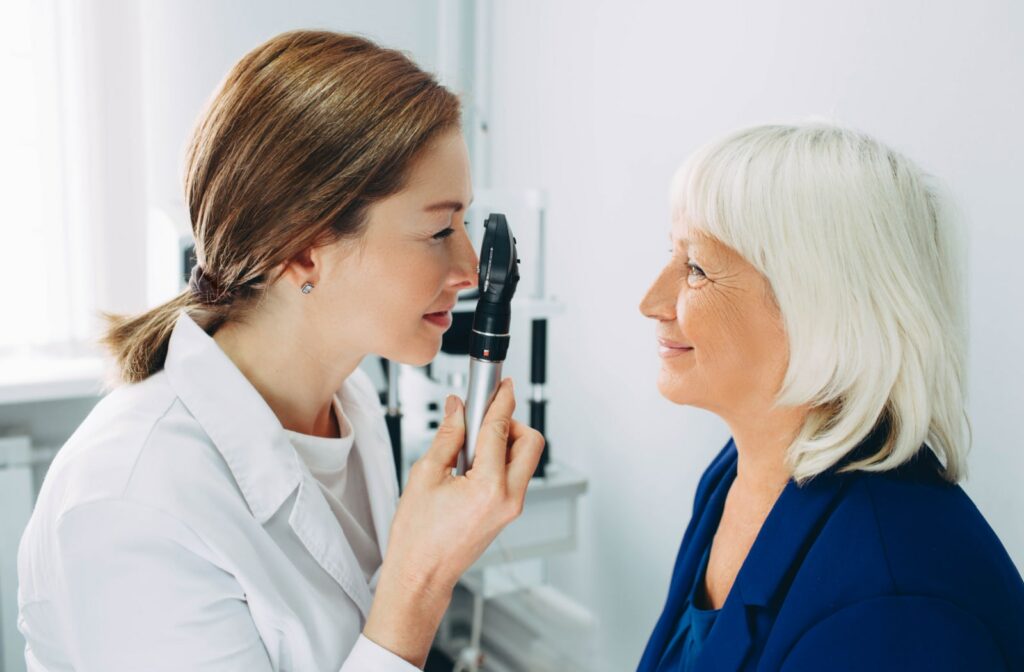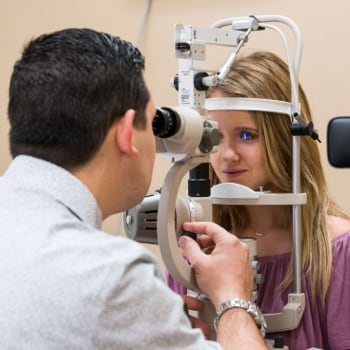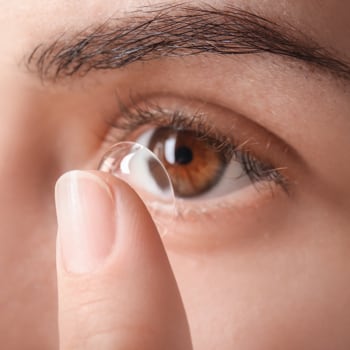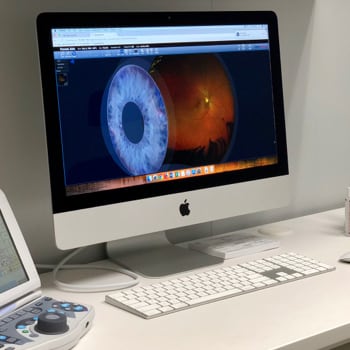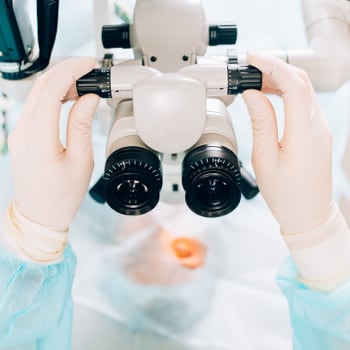Getting your eyes checked isn’t just about getting a new prescription—even though that’s a big part of it! During a comprehensive eye exam, our team is looking for plenty of different eye conditions.
Diseases that can be detected in an eye exam include:
- Dry eye
- Cataracts
- Glaucoma
- Age-related macular degeneration (AMD)
- Blepharitis
- Diabetes
How Important Are Eye Exams?
Let’s start with the importance of regular eye exams. Even if your vision is clear and you don’t notice any problems, that doesn’t mean your eyes are entirely healthy! Plenty of potential eye diseases don’t show any obvious symptoms until they’ve already started doing some damage.
That’s why eye exams are so important. They give a trained professional a chance to thoroughly examine your eyes to see if any conditions are developing. And if they are, our team can catch them earlier on—when they’re often much more treatable and before they’ve done your eyes any harm.
Our team at Great Hills Eye Care recommends you book an eye exam at least once a year. This way, we can stay on top of things, and you can keep your vision clear and your prescription up-to-date.
So, what diseases can be detected in an eye exam?
1. Dry Eye
If you ever feel like your eyes are on fire or like there’s something gritty trapped under your eyelid, that may be dry eye.
Your eyes naturally produce tears to keep themselves protected, hydrated, and clean. But when there’s a problem with your tears, the eyes are completely unprotected. Dry eye can be caused by:
- Problems with the meibomian gland
- Environmental factors
- Medication
- Other medical conditions
Fortunately, we can help with dry eye therapy! We’ll take a look at what’s causing your dry eye and recommend some changes—or use our in-office treatment to help you find relief.
2. Cataracts
Cataracts are another common condition. A cataract develops when your eye’s natural lens starts to cloud up. They’re usually caused by proteins in the eye breaking down and clumping together and often lead to:
- Blurry vision
- Light sensitivity
- Poor night vision
There’s good news, though! Through a simple cataract surgery, that clouded lens can be replaced with an artificial one. It’s simple, quick, and relatively noninvasive.

3. Glaucoma
Glaucoma, often referred to as “the silent thief of sight,” earned its name for a reason: it usually begins to progress without any visible symptoms.
It’s a group of complex eye conditions that lead to an increase in internal pressure in the eye. Eventually, if it’s left unaddressed or undiagnosed, this starts to put pressure on the optic nerve. Once it starts damaging the nerve, damage is permanent.
During an eye exam, our team can monitor your eye pressure to see if glaucoma is developing. With timely treatment, we can intervene and help preserve your remaining vision.
4. Age-Related Macular Degeneration (AMD)
The retina inside the eye is made up of a few parts. One important part is the macula, and it’s responsible for clear central vision. But sometimes, this macula can start to break down and get damaged. This is called “macular degeneration” or “age-related macular degeneration” because it usually develops later in life.
There’s no known cure for AMD, so early detection is key. We’ll check your retina during your next eye exam and give you some advice for keeping your eyes healthy, like nutritional supplements and some lifestyle changes.
5. Blepharitis
There are a few types of blepharitis. Generally, blepharitis is a term used for when the eyelids themselves become inflamed. The types include:
- Anterior blepharitis, where the front of the eyelid is inflamed
- Posterior blepharitis, where the inner side of the eyelid is inflamed
- Mixed blepharitis, which features both anterior and posterior inflammation
These can be caused by several things. Usually, it’s due to a bacterial or viral infection in the eyelids. Sometimes, it can be caused by tiny mites called Demodex mites spreading to the eyelid.
Either way, we can treat your blepharitis. We’ll likely recommend:
- Eyelid hygiene
- Warm compresses
- Prescription medication
In some cases, we’ll use in-office treatments to help treat your blepharitis and find you relief.
6. Diabetes
When we’re checking your eyes, we aren’t just looking for diseases inside the eye. We’re looking for any signs that something’s wrong. In fact, we can even detect if diabetes is affecting your eyes!
That’s right—diabetes can affect your eyes if you aren’t careful. Diabetes affects the blood vessels all throughout the body, and the eye is no exception. Over time, the blood vessels in the eye—specifically the retina—can start swelling or becoming weaker, leading to fluids leaking into the eye.
This is called “diabetic retinopathy.” During an eye exam, we’ll keep an eye out for this condition and work closely with you to help you monitor your diabetes.
Book Your Next Eye Exam with Us
Regular eye exams are an important part of staying healthy. That’s why our team here at Great Hills Eye Care offers same-day appointments when we have the availability. We want to help each and every patient keep their eyes and vision healthy, so book an appointment with us today.

